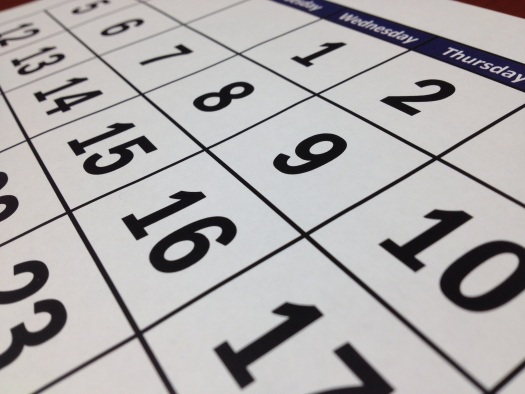Note from Caroline: This guest post comes courtesy of my good friend Rachel. Recently, Rachel’s partner received a medical diagnosis that required her to switch to a low-fat eating plan. This was a tricky situation to navigate, since she is recovered from an eating disorder and wanted to avoid triggering situations. Keep reading to learn how Rachel and her partner worked through these changes, and to see the delicious low-fat menu they were able to create.
The upper abdominal pain was on and off, seemingly random, hitting my partner in waves of discomfort that would keep her up at night. After several weeks, we deduced that gallstones were the likely culprit (and a few trips to the doctor confirmed it).
We were happy to have a diagnosis but also struggling — how can someone in recovery from an eating disorder (ED) safely go on the low-fat diet necessary to reduce gallbladder pain?
My partner tried to do research for new recipes, but googling “low fat foods” led to endless websites with triggering language and flavorless, uninspired, meal ideas.
I love food too much to allow it to become a source of despair. It has to taste good! I was confident that I could find good recipes that would satisfy our taste buds and needs.
I’m no dietician, but I hope that anyone looking to lower the fat content in their food, or just looking for some variation in their quarantine cooking, will find some of our successes equally delicious.
Mushrooms
This portabella mushroom marinade is awesome – even if you all you can find are grocery store mushrooms (we are lucky enough to have access to high quality mushrooms through our farm share.)
We modify the recipe slightly by decreasing the wine and increasing the soy sauce, and we typically cook it by sautéing on the stovetop rather than baking.
We’ve used these marinated mushrooms as the starting point for three dishes:
- Bowls – We typically pair mushrooms with quinoa, roasted veggies, and the spiced chickpeas mentioned below. You can also throw tofu in the pan after the mushrooms are almost done, and cook them together in this sauce to go with quinoa or rice.
- Salad – The marinade doubles as a salad dressing. We sautéed portobellos and paired it with fresh spinach and strawberries.
- Pasta – For a special Valentines day meal, I sautéed a mix of local mushrooms and used them with their sauce on fresh pasta. (I didn’t have wine, so I used almost all soy sauce. Combined with the thickness of the pasta, this made it feel like an Italian-Asian fusion in the vein of pad see ew. If you kept the wine amount from the original recipe it would probably have more of an Italian flavor).

Tofu
Some folks are intimidated by tofu or think it’s flavorless, but both of these notions can be thrown away once you try preparing it at home. Tofu is cheaper, requires less cleanup, and is faster to cook than meat.
We like to get extra firm tofu, drain the liquid from the package, wrap the tofu in a clean dishcloth or paper towel and press it between two plates with a weight on top (like an olive oil container) while we prep other ingredients. Getting rid of the extra moisture helps it absorb the flavors of your sauce and crisp up.
Here are some ways we like to use tofu:
- Stir-Fry – This is an awesome technique for cooking with little oil and maximum flavor. My go to combo is ginger, garlic, broccoli, carrots, and tofu. You can mix your own sauce or use pre-made (I like Soy Vey’s Teriyaki marinade).
- Experiment with texture – Tearing the tofu in craggy pieces can help it crisp up more, if you cook it separately. We also tried grating the tofu on a box grater (inspired by this recipe.) While the grating wasn’t that effective (I would rather smash it into small pieces with my fingers), it did create a cool texture that carried the sauce well for an udon noodle dish.
- This vegetarian banh mi recipe is fantastic, and you can use the extra pickled vegetables in salads or bowls.

Beans
During the early part of quarantine, when we were trying to figure out how to only grocery shop every two weeks, we quickly started experimenting with more shelf-stable recipes. Beans were already somewhat of a staple in our cooking, but these dishes really cemented their place:
- Spiced chickpeas – For the easiest and most flexible addition to bowls and salads, drain a can or two of chickpeas, put them in a non-stick pan, and season to your liking while they heat up and crisp slightly. Our favorite flavor combination includes dashes of mushroom powder (Trader Joe’s has a great blend), cayenne pepper, curry powder, and garlic powder.
- Chili – Another super fast and easy weeknight meal. Here is one of our favorite chili recipes.
- Chickpea soup – We made this soup for the first time two weeks ago, and I just soaked more chickpeas to make it again tonight. I think it will still taste good if you drop the amount of olive oil in the soup, but the parmesan topping (mixed with lemon zest and black pepper) is worth budgeting for!

Think global for both home cooking and take-out
I tend to be skeptical of food that’s been altered to imitate something else (for example, I love vegetarian food, but I never crave a veggie burger). Taking the same approach to low-fat, we tried to avoid recipes where the “real thing” was missing.
Looking to food from around the globe has been super helpful, because many cultures do not center dairy and meat the way America does. Reading cookbooks from different cuisines is a great way to find delicious recipes without triggering diet-culture language.
Supporting local immigrant businesses for take-out has also been our favorite way to enjoy dinner on evenings we’re too tired to cook. We’ve had great success with:
- Ethiopian food – Most Ethiopian restaurants offer vegetarian platters, which are a great way to try a variety of different lentil and vegetable preparations.
- Early in quarantine we were missing our favorite Ethiopian restaurant in another city, so we tried recreating some dishes from home. My attempt at turning frozen spinach into anything resembling collard greens was a total fail, but these lentils were excellent. Note that 2 cups of dried lentils makes a huge amount, so if you’re cooking for 1-2 people, you may want to cut the recipe in half. I didn’t have access to injera at the time, so we ate it with rice.
- Indian food – Although many traditional Indian sauces are quite rich, there are still some good options such as tandoori chicken and dosa.
- For Indian food at home, Priya Krishna’s book Indian-ish is a great guide. We like her Aloo Gobi recipe (we just cut back the oil for roasting to the minimum it took to coat the veggies.)
- Arab food – Although olive oil features heavily in a lot of Arab cuisine, most Arab restaurants will also have chicken on kebabs or in platters that should be pretty low-fat safe (as well as juicy and delicious!)
- Hummus is also easy to make at home, and you can adjust the levels of oil and tahini to your needs and taste. I haven’t used this precise recipe before (and I definitely have never bothered to cook my own chickpeas or peel them), but the order of ingredients is correct. Watching the tahini turn from brown to white with the lemon juice is magical.
- Chipotle – Chipotle is neither local nor really Mexican, but the fact that this is a chain means it’s easy to get the precise nutritional facts for their dishes. My partner’s favorite is a bowl, with steak, white rice, pinto beans, extra tomato and corn salsa and lettuce. (Yes – surprisingly, the steak at Chipotle has 1 fewer gram of fat than the chicken, and the white rice has 2g less than the brown.)

I hope that some of our hard-won knowledge can help you to create your own delicious low-fat eating plan without all the struggle.
















